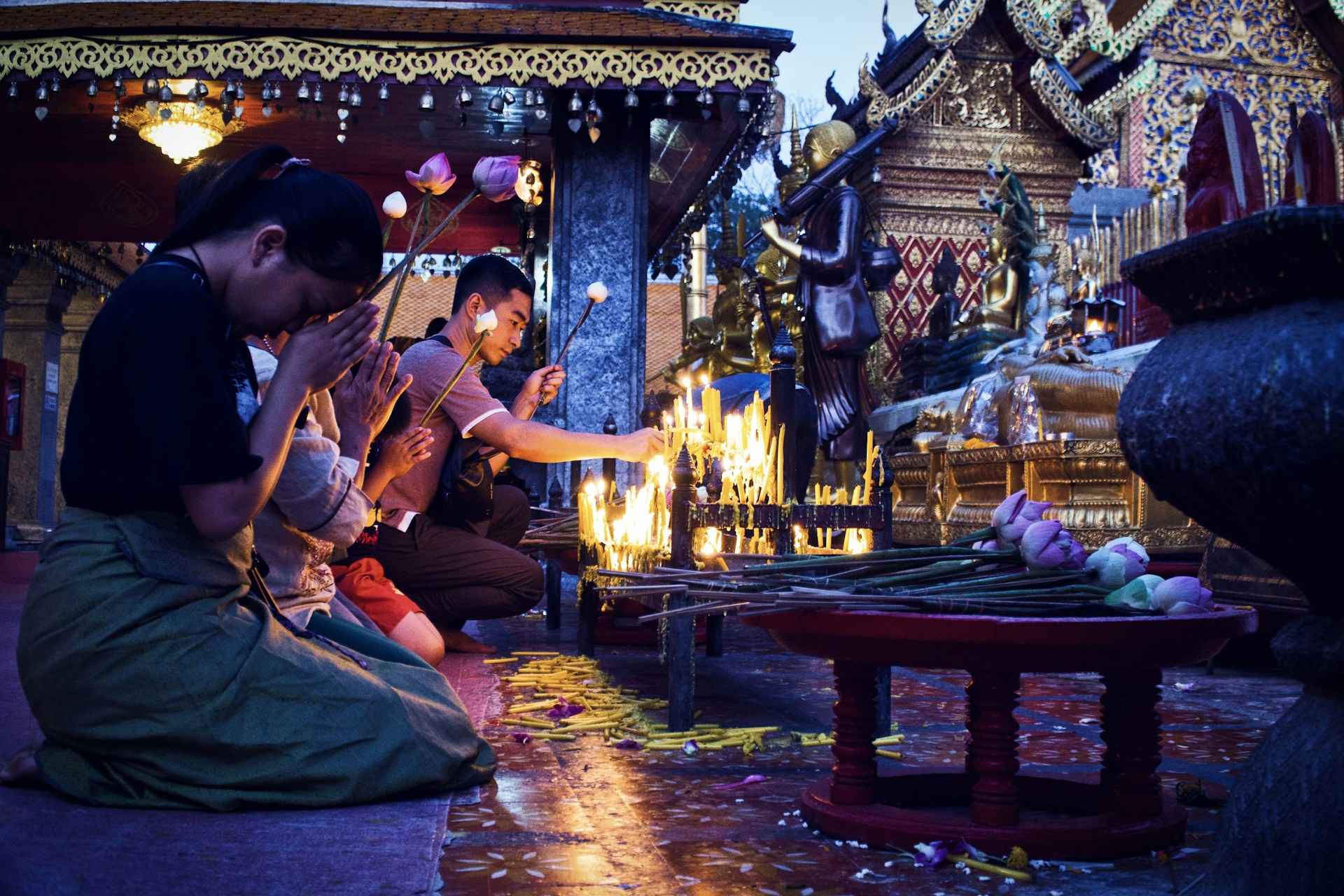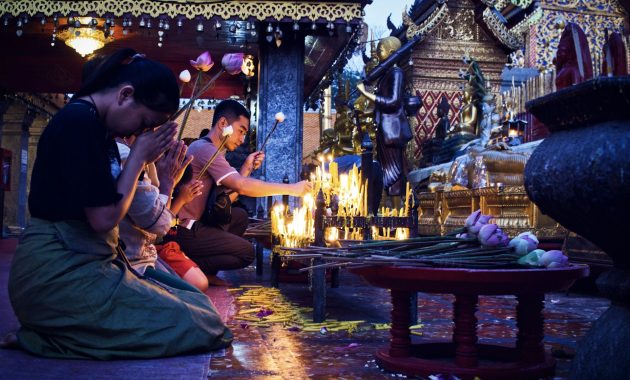
Chiang Mai, the cultural heart of Northern Thailand, is a city steeped in history, tradition, and spirituality. The city, once the capital of the Lanna Kingdom, is famous for its ancient temples, each offering a glimpse into the past and showcasing the architectural grandeur of Thailand’s historical heritage. In this article, we will embark on a journey through time to explore the most captivating temples of Chiang Mai, delving deep into their histories, architectural beauty, and spiritual significance.
A Historical Overview of Chiang Mai’s Temples
Chiang Mai’s foundation dates back to 1296 when King Mengrai established the city as the capital of the Lanna Kingdom. The city became a religious and cultural center, and temples, or wats, were integral to the social and spiritual life of its inhabitants. These temples, many of which still stand today, have witnessed the evolution of the city over centuries. The Lanna architecture, influenced by Burmese, Mon, and Sri Lankan styles, is distinctive in many of Chiang Mai’s temples, making each temple visit a journey through both time and culture.
Wat Phra That Doi Suthep: The Crown Jewel of Chiang Mai
Perched atop Doi Suthep mountain, Wat Phra That Doi Suthep is undoubtedly the most iconic temple in Chiang Mai. Dating back to 1383, this temple is one of the most revered in all of Thailand. The climb to the temple begins with a steep 309-step staircase, flanked by magnificent Naga serpent sculptures, symbolizing protection and strength.
At the summit, visitors are greeted by an awe-inspiring golden chedi (stupa), which glistens in the sunlight, reflecting the temple’s importance as a religious center. The chedi is believed to enshrine a relic of the Buddha, making it a pilgrimage site for Buddhists from around the world. The panoramic views of Chiang Mai from the temple grounds are nothing short of breathtaking, adding to the temple’s allure.
Key Highlights of Wat Phra That Doi Suthep:
- Golden Chedi: A towering structure housing sacred Buddhist relics.
- Buddhist Monastery: Active and open to the public for meditation sessions.
- Panoramic Views: A stunning view of Chiang Mai city and the surrounding landscape.
Wat Chedi Luang: The Heart of the Lanna Kingdom
Located in the heart of Chiang Mai’s old city, Wat Chedi Luang was once the tallest structure in the kingdom. Built between the 14th and 15th centuries, this temple is renowned for its massive brick chedi, which, despite being partially destroyed by an earthquake in 1545, remains an impressive sight. Originally standing at 82 meters tall, the chedi is a testament to the architectural ambition of the Lanna people.
The temple grounds are also home to the City Pillar (Sao Inthakin), which holds deep significance for Chiang Mai’s residents, symbolizing the city’s spiritual foundation. Additionally, Wat Chedi Luang once housed the Emerald Buddha, Thailand’s most sacred religious artifact, before it was moved to Bangkok in 1475.
Key Highlights of Wat Chedi Luang:
- Massive Brick Chedi: A partially restored relic of Lanna architecture.
- Sao Inthakin: The City Pillar, revered by locals.
- Monk Chats: Opportunities to engage in conversations with local monks to learn about Buddhism.
Wat Phra Singh: The Temple of the Lion Buddha
Another jewel in Chiang Mai’s temple crown is Wat Phra Singh, located within the old city walls. This temple, built in the 14th century, is home to the highly revered Phra Buddha Sihing image, which gives the temple its name. The temple is a fine example of classic Lanna architecture, with intricate wooden carvings and tiered roofs.
Wat Phra Singh is particularly significant during Songkran, the Thai New Year, when the Phra Buddha Sihing statue is paraded through the streets of Chiang Mai. The temple’s grounds are also beautifully landscaped, offering a peaceful retreat from the bustling city outside its walls.

Key Highlights of Wat Phra Singh:
- Phra Buddha Sihing: A highly venerated Buddha image.
- Lanna Architecture: A masterpiece of traditional Northern Thai design.
- Cultural Significance: The center of Songkran festivities in Chiang Mai.
Wat Umong: The Forest Temple
Tucked away in a serene forest at the foot of Doi Suthep, Wat Umong is one of Chiang Mai’s most unique temples. Built in the late 13th century by King Mangrai, Wat Umong is known for its ancient underground tunnels and tranquil setting. The tunnels were constructed to serve as a meditation retreat, and visitors can still wander through these dimly lit passageways, experiencing a sense of calm and reflection.
Wat Umong is also home to a large pond, where visitors often feed the fish and turtles, as well as a Buddha head sculpture encased in tree roots, reminiscent of the famous scene at Ayutthaya’s Wat Mahathat.
Key Highlights of Wat Umong:
- Underground Tunnels: A labyrinth used for meditation.
- Forest Setting: A peaceful, nature-filled atmosphere.
- Ancient Relics: Various old sculptures and artifacts scattered around the grounds.
Wat Suan Dok: The Temple of the White Chedis
Wat Suan Dok, meaning “flower garden temple,” was built in the 14th century on what was once a royal flower garden. This temple is known for its collection of white chedis, which contain the ashes of Chiang Mai’s royal family. The temple also houses a large, 500-year-old bronze Buddha statue, one of the largest in Thailand.
Wat Suan Dok is a significant center for Buddhist study and meditation, with an active monk community. It offers meditation classes and retreats, making it an ideal destination for those interested in deepening their spiritual practice.
Key Highlights of Wat Suan Dok:
- White Chedis: Housing the ashes of Chiang Mai’s royals.
- Bronze Buddha Statue: A massive and ancient religious icon.
- Meditation Center: Classes and retreats available for visitors.
Conclusion: A Spiritual and Cultural Journey Through Chiang Mai’s Temples
Exploring Chiang Mai’s ancient temples is more than just a sightseeing tour; it is a journey through centuries of history, spirituality, and cultural heritage. Each temple tells a story of Chiang Mai’s past, from its days as the capital of the Lanna Kingdom to its role as a center of Buddhist learning and practice today. Whether you’re drawn to the golden splendor of Wat Phra That Doi Suthep, the historical significance of Wat Chedi Luang, or the meditative calm of Wat Umong, Chiang Mai’s temples offer a profound connection to Thailand’s rich spiritual traditions.